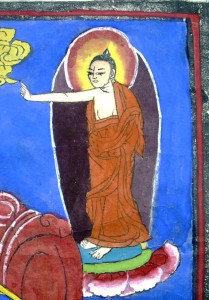The following is respectfully quoted from the introduction to “Buddhist Ethics” by Jamgön Kongtrul:
The Ethics of Personal Liberation
The focus of the ethics of personal liberation is to control impulses that lead body and speech to undertake negative actions. Because such actions are always linked to limiting emotional patterns, Individualists, in addition to observing ethics, must train in the discriminative awareness that realizes selflessness in order to attain perfect peace, the state of cessation of such patterns. Furthermore, for that meditation to be stable, mental concentration also must be cultivated. Thus, personal liberation ethics are essentially identical with training in morality, meditation, and wisdom. Although the aim of the monk’s vows and other personal liberation vows appears to be restraint from unwholesome physical behavior, it would be misleading to view those vows reductively, because their implicit aim is to overcome limiting mental patterns.
THe foundation of these ethics lies in the precepts relating to taking refuge and four “root,” or crucial, precepts that prohibit murder, theft, lying, and adultery. Refuge relates to the Buddha, the Dharma, and the Sangha: the first is understood as the Teacher, the second as the teachings, and the third as the community (here the monastic one in particular). Originally, taking refuge was primarily an expression of faith that distinguished a follower of the Buddha from practitioners of other religions. Refuge marked the beginning of an earnest undertaking of the Buddhist path. In higher forms of Buddhist view and methods of implementation, refuge takes on deeper layers of meaning, and in the ultimate sense means taking refuge in “the buddha within,” the realization of the natural and unmodified intrinsic awareness lying within oneself.
The four root precepts prohibit four actions that would undoubtedly cause suffering for others and also compromise the tranquility of one’s mind, thereby destroying one’s chance to develop meditation and gain the discriminative awareness needed to uproot cyclic existence.
When the Buddhist community was first being formed, taking refuge in front of the Buddha was all that was needed for one to be accepted as a monk. Gradually, because of the misbehavior of monks and for other reasons, rules were instituted, for the most part limited to a particular temporal and social context. Many were intended not only for the welfare of the monks themselves, but also for the community’s internal harmony and external social respectability.
Rules gained more importance, to be a monk became a matter of maintaining specific rules and regulations rather than a matter of heading into a spiritual life. Eventually, to enter the Buddhist community, the aspirant needed to assume vows, and vows came to represent a commitment to abide by the entire body of rules. Such vows were not simple promises. Instead, they were “generated” in the candidate through a series of conditions and requisites, such as the abbot, and their primary requirement was an attitude of disengagement from cyclic life.
As the vow developed into an “entity,” identification of its nature became an important matter, which explains the various assertions Kongtrul presents, based on detailed analyses, on the nature of the vow. The conclusions would have little relevance to the keeping of the rules themselves but would definitely be relevant to determining at what point a vow is lost.
Personal liberation vows are basically of two kinds: those that prohibit actions such as killing and lying, which are considered unwholesome for anyone who commits them; and those that prohibit actions such as eating in the evening, which ar improper only for monks and nuns. The first kind involves a concept of “natural evil,” or “absolute morality,” which is probably influenced by the realist philosophical view held by the Analysts, to whom the tradition of personal liberation is undoubtedly connected. That also explains, to some extent, why the personal liberation vow is compared to a clay pot; once broken, it cannot be repaired.
Kongtrul discusses in detail the various classes of personal liberation: the precepts of the purificatory fast and the vows of the layperson, the male and female novices, the female postulant, and the monk. He also briefly examines the series of monastic rites, including confession. The vows of a nun, regrettably, are not included, because, as Kongtrul explains, the ordination of nuns was never introduced into Tibet.
